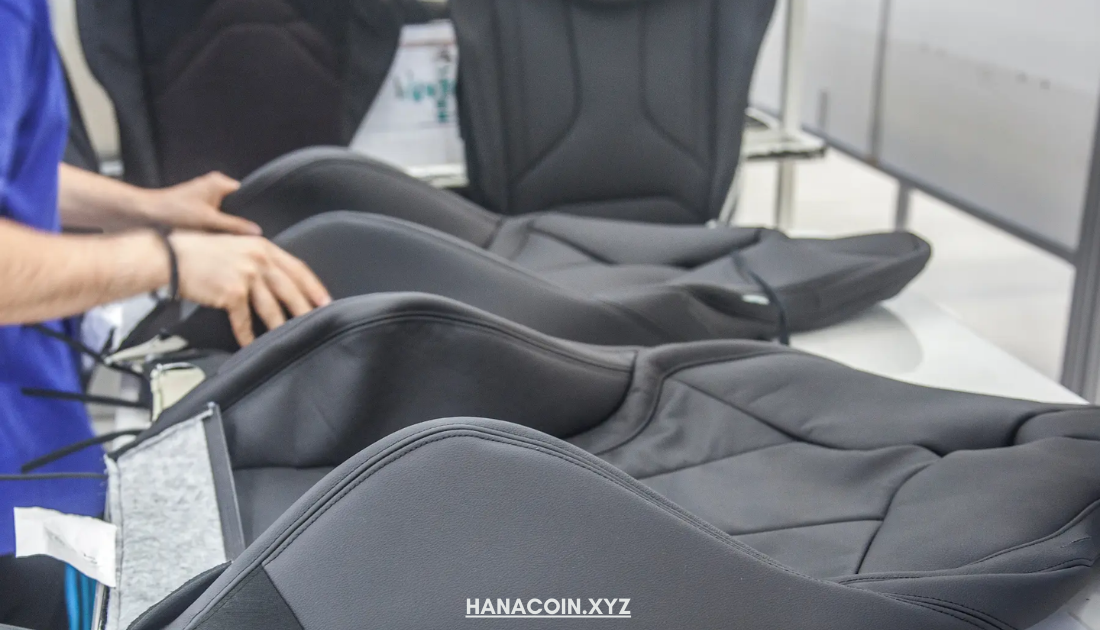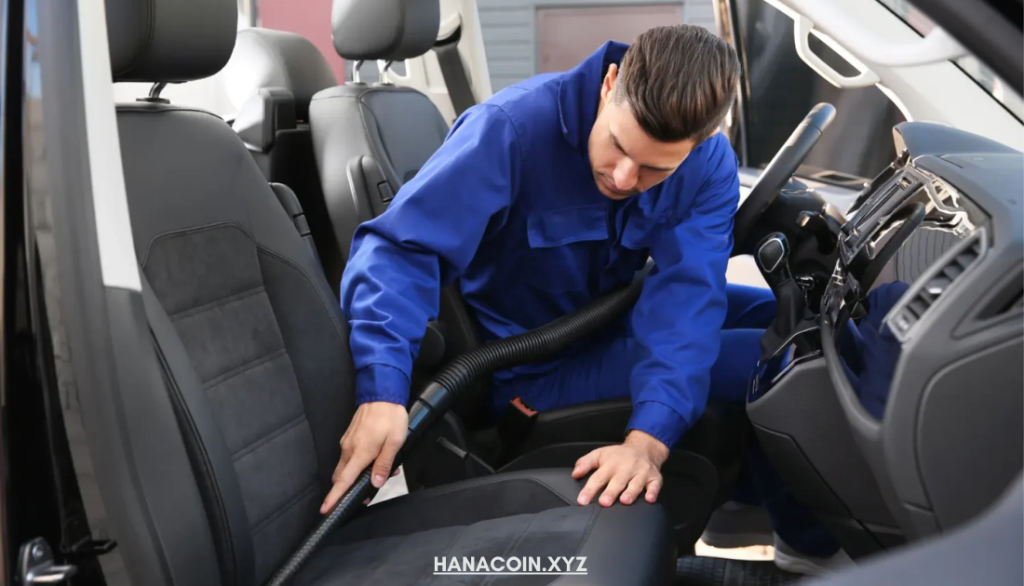Blog
Car Seat Cover Installation Tips: A Complete Guide for a Perfect Fit
Installing car seat covers is one of the simplest ways to protect your car’s interior and add a touch of style. However, to achieve a smooth and secure fit, it’s essential to follow the right steps and techniques. Proper installation not only enhances the appearance of your seats but also ensures that the covers stay in place, providing lasting comfort and protection. In this article, we’ll go over some essential car seat cover installation tips to help you achieve the best results for a clean, professional look.
Why Proper Car Seat Cover Installation Matters
While car seat covers are easy to install, doing it correctly can make a significant difference. Properly fitted seat covers offer a neat appearance, improving your car’s overall look and feel. More importantly, they provide better protection against spills, dirt, and wear, extending the life of your original upholstery. A well-installed cover also remains secure, preventing shifting or bunching, which can make seats uncomfortable and reduce their effectiveness.
Additionally, installing car seat covers with care ensures they don’t interfere with safety features like side airbags. Many car seat covers are designed with specific openings or seams to accommodate airbags, so correct installation is vital for maintaining functionality and safety.
Essential Car Seat Cover Installation Tips
To ensure that your car seat covers fit perfectly and stay in place, follow these practical tips during installation:
1. Choose the Right Seat Cover Size and Style
Before you begin, it’s crucial to select the right size and type of seat cover for your vehicle. Seat covers come in universal, semi-custom, and custom-fit options. Universal covers fit a broad range of car models, while semi-custom covers are tailored for specific types of seats. Custom-fit covers, on the other hand, are specifically designed for your car’s make and model.
For a flawless fit, custom-fit seat covers are ideal. They’re made to match the exact contours of your seats, providing a snug, seamless appearance. Make sure you choose seat covers that match your seat configuration—whether bucket seats, bench seats, or split seats—for easy installation and the best protection.
2. Clean the Seats Thoroughly Before Installation
It’s essential to start with a clean slate. Before installing your seat covers, vacuum and clean your seats to remove any dirt, dust, or debris. A clean surface helps the covers adhere better and prevents dirt from getting trapped underneath. If the seats are stained, using a fabric cleaner will help remove any stubborn spots.
Cleaning the seats first not only improves the longevity of both the seats and covers but also ensures that the covers won’t trap unwanted odors or particles. For a more pleasant experience, consider adding a fabric freshener after cleaning and before covering the seats.
3. Remove the Headrests and Armrests
In most cars, the headrests and, if applicable, armrests can be removed. Removing these components will make it easier to slide the covers onto the seats and achieve a smoother fit. Most headrests can be detached by pressing a small button on the side of the seat or at the base of the headrest.
Once the headrests and armrests are removed, keep them aside, as you’ll reinstall them after fitting the covers. Some seat covers come with separate pieces for headrests and armrests, so removing these parts first will make it easier to fit everything together neatly.
4. Align and Secure the Seat Cover Bottom First
When installing the cover, begin by positioning and securing the bottom part of the seat cover. Slide the cover over the seat cushion and adjust it to fit the contours of the seat. Pull the cover down tightly, ensuring that it’s aligned with the seat edges. This step is crucial, as the bottom section serves as the foundation for the rest of the cover.
After adjusting, use any straps or buckles that come with the cover to secure it in place. Fasten the straps tightly underneath the seat, keeping the cover taut and reducing the chance of shifting. If the cover has hooks, attach them to suitable anchor points under the seat to ensure a stable hold.
5. Pull the Backrest Cover Over Carefully
Next, pull the backrest portion of the cover over the seat, starting from the top and working your way down. Take care to align the cover with the seat contours as you go, smoothing out any wrinkles or folds for a snug fit. Make sure to leave openings for seatbelt attachments or other seat mechanisms if the cover has pre-cut holes.
Once the backrest is aligned, fasten any straps or hooks to keep it in place. Many covers feature elastic bands or Velcro straps to hold the cover tightly around the backrest, ensuring it doesn’t shift or bunch up over time. Adjust as needed to create a smooth, tailored appearance.

6. Adjust for Airbag Compatibility
If your car has side airbags in the seats, it’s essential to choose covers designed to accommodate airbags and ensure that these features are not obstructed. Many seat covers include special seams or slits that allow airbags to deploy safely in the event of an accident.
Follow the manufacturer’s instructions for installing covers on seats with airbags, and double-check that the seams align with the airbag positions. Safety should always be a priority, so make sure that the covers do not interfere with any safety features.
7. Secure Additional Straps and Adjust for a Taut Fit
After fitting both the bottom cushion and backrest, inspect the seat covers for any remaining loose areas. Some covers include additional straps or Velcro tabs that can be tucked into the seat crevices for added security. Use these features to achieve a taut, smooth fit that minimizes wrinkles.
A tight fit not only looks better but also prevents the cover from shifting during use, providing greater comfort and protection. Run your hands over the cover to smooth out any remaining creases, adjusting straps as necessary for a clean, fitted appearance.
8. Reinstall the Headrests and Armrests
With the main sections of the cover in place, it’s time to reinstall the headrests and armrests. If your seat covers come with separate headrest pieces, slide these onto the headrests before attaching them back to the seats. Adjust the headrest covers for a snug fit and ensure that they align with the main seat cover.
Reattach the headrests by inserting them into their slots and locking them in place. If there are any armrest covers, slide them on carefully, ensuring a seamless fit with the rest of the seat cover. Make any final adjustments to ensure all components are well-aligned and secure.
9. Double-Check for Secure Fit and Comfort
After installation, take a moment to check that the seat covers are securely fitted and comfortable to sit on. Sit in each seat to make sure that the covers do not slide, bunch up, or create any discomfort. If you notice any shifting or loose areas, tighten the straps and adjust the cover as needed.
This final check ensures that the covers are not only visually appealing but also functional and comfortable. A well-fitted cover enhances the seating experience and provides the intended protection, allowing you to enjoy the full benefits of your investment.
Tips for Maintaining Car Seat Covers
Once your covers are installed, keeping them in good condition will prolong their lifespan and maintain their appearance. Here are a few tips for maintenance:
- Vacuum Regularly: Vacuum seat covers to remove dust, crumbs, and dirt, which can accumulate over time.
- Spot Clean Stains: Use a fabric cleaner to gently remove any spills or stains. Follow the manufacturer’s instructions to avoid damaging the cover material.
- Wash When Needed: Some car seat covers are machine washable; check the label and follow the recommended washing and drying instructions for easy cleaning.
- Inspect Straps Periodically: Over time, straps may loosen with use, so periodically check and adjust them to maintain a snug fit.
Conclusion: Enjoy the Benefits of Well-Installed Car Seat Covers
Installing car seat covers is a straightforward process that, when done properly, can protect and enhance your car’s interior. By following these car seat cover installation tips, you can ensure a smooth fit, long-lasting comfort, and effective protection for your vehicle’s seats. From choosing the right size to carefully securing each part, each step contributes to a cleaner, more stylish, and durable interior.
Whether you’re looking to preserve your car’s upholstery, add a touch of personalization, or simply make your daily drive more comfortable, a well-installed car seat cover delivers the perfect solution. Enjoy the results of your effort and the extended life of your car’s seats with quality, well-fitted covers.

